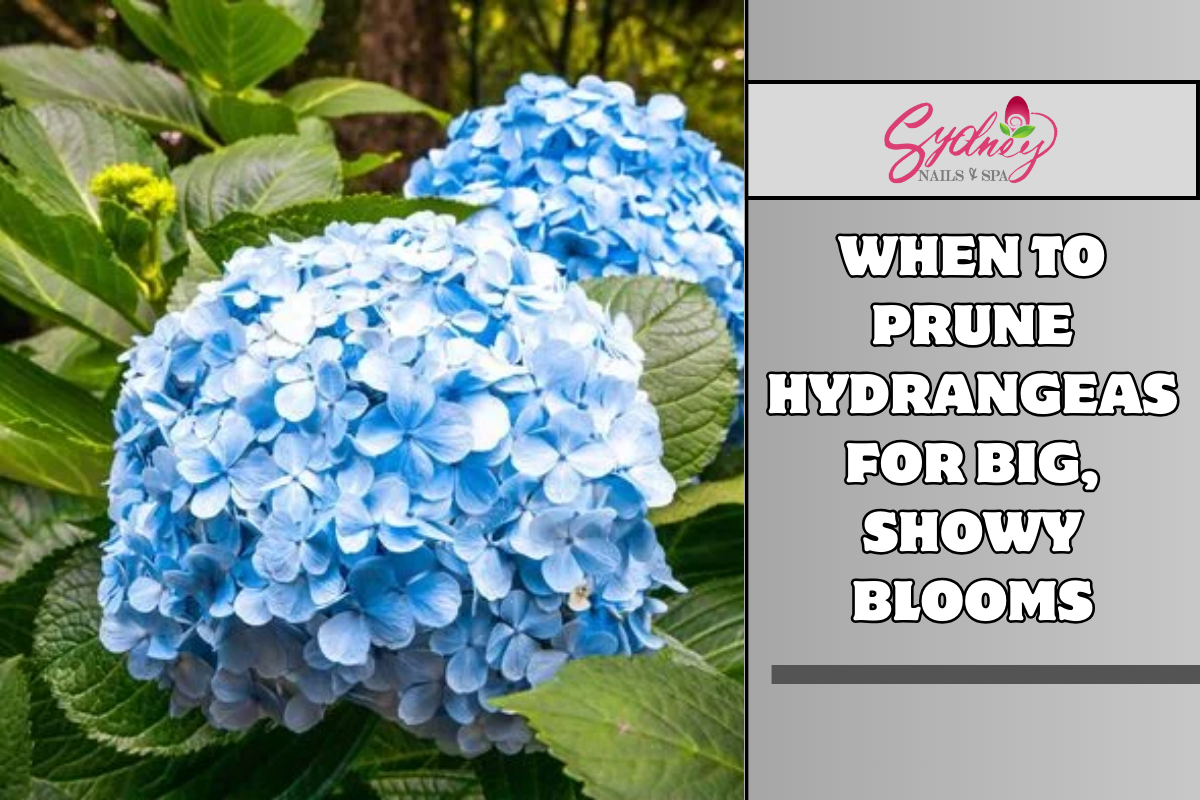When to Prune Hydrangeas for Big, Showy Blooms: Hydrangeas have gorgeous blooms, but they require correct pruning to develop. When clipped at the correct time, hydrangeas thrive and blossom.
When to Prune Hydrangeas for Big, Showy Blooms
The optimal time to trim hydrangeas depends on their kind and desired appearance. This article explains when to trim hydrangeas for large, stunning blossoms. Your plants will appear better.
Understanding Hydrangea Types
Mophead and Lacecap Hydrangeas: Mopheads or lacecaps are large flower groupings with round or flat tips. Their flower buds are from the previous year since they blossom on ancient wood. Examples include “Endless Summer,” “Nikko Blue,” and “Twist-n-Shout”.
Panicle Hydrangeas: Panicled hydrangeas feature cone-shaped flower groupings. The blooms start white but mature pink or scarlet. Flower buds occur on the season’s fresh growth because they blossom on new wood. “Limelight,” “Pinky Winky,” and “Vanilla Strawberry” sparkle.
Smooth Hydrangeas: Large, spherical flower groups form on fresh wood in smooth hydrangeas. Cut them in late winter or early spring to speed growth and flowering. Example: “Annabelle” and “Incrediball”.
Pruning Mophead and Lacecap Hydrangeas
Since each hydrangea grows on ancient wood, its flower buds are already growing from the previous year. If you cut them too soon, you may miss flower buds that were ready to bloom, reducing their growth. To ensure large, beautiful hydrangea blooms:
Prune sparingly: Limit cuts. Cut the plant only to remove dead or damaged wood after blooming. Do not overcut flowers in late summer or autumn; it might damage them next year.
Early summer to early fall: Shape the plant with a few minor cuttings in early summer. Avoid cutting down the plant at the end of summer so it may generate bloom buds next year.
Pruning Panicle Hydrangeas
Panicle hydrangeas have season-long bloom buds on fresh wood. This makes timely cutting easier. Pinching hydrangeas makes them blossom large and pretty:
Also See:
8 Prettiest Pink Hydrangea Varieties for Your Yard
Late winter to early spring: Cut down trees and plants before they produce new leaves in late winter or early spring. Remove weak or dead plant portions and shape it lightly. It may now generate robust new leaves and bunches of blossoms in the growing season.
Regular maintenance: Remove dead flowers throughout the growth season to preserve the plant blooming and prevent it from generating seeds, which drain energy and reduce its ability to bloom and generate new leaves.
Pruning Smooth Hydrangeas
Smooth hydrangeas blossom on new wood, so late winter or early spring pruning works nicely. Do these to grow huge, lovely smooth hydrangeas:
Late winter to early spring: Cut a plant to 6–12 inches above ground to revive it. This helps the plant grow robust leaves and blossoms throughout the season.
Regular deadheading: Remove dead flowers throughout the growth season to maintain the plant flowering and prevent seed production.
Additional Tips for Pruning Hydrangeas
Use sharp, clean tools: Sharp, clean trimming shears cut cleanly and prevent sickness.
Know your hydrangea type: You must know when and how to clip your hydrangea to have it bloom.
Monitor for signs of overgrowth: Cut off old or weak stems to thin down hydrangeas that are overly huge or crowded. This increases air and light flow.
Conclusion
Hydrangeas should be trimmed at the proper time for large, attractive blossoms. Mophead and lacecap hydrangeas should only be pruned after flowering. However, late winter or early spring panicle hydrangea pruning is best. Late winter or early spring pruning strengthens smooth hydrangeas. These methods can keep your hydrangeas blooming. Learn how your plant grows.
